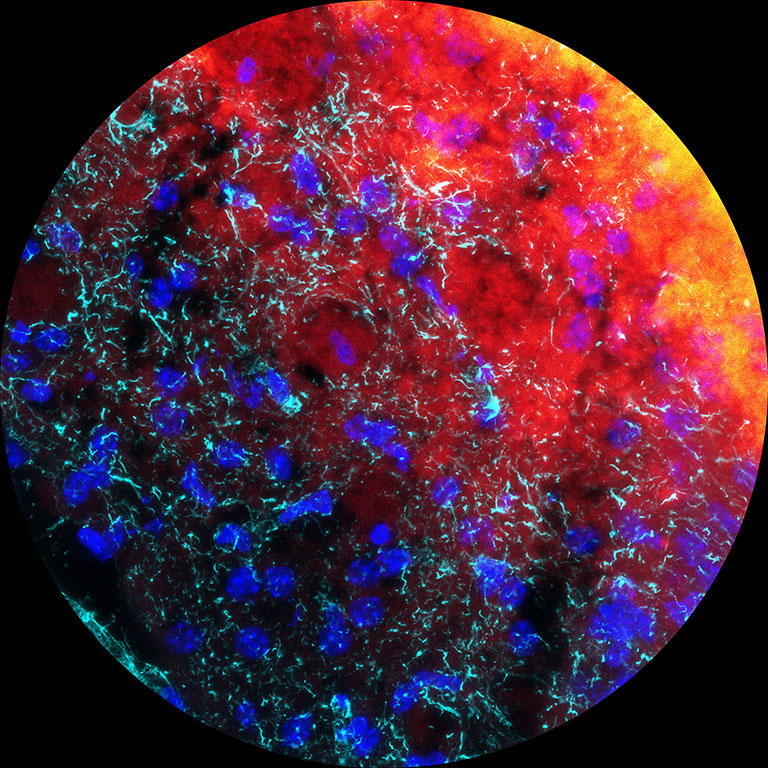
The blood–brain barrier prevents most therapeutics from accumulating in the brain at levels needed to treat glioblastoma and other tumors. Convection-enhanced delivery (CED) is a promising technique for delivering therapeutics directly into brain tissues by generating a pressure gradient at the tip of an infusion catheter. Yet, drugs delivered this way can be rapidly cleared by the body and may be toxic to non-cancer cells.
Published in the Journal of the American Chemical Society, new nanoparticles from the Hammond and Straehla labs were designed to overcome these challenges, prolonging drugs’ time in the tumor and improving cellular targeting to synergize with CED for effective glioblastoma therapy. Lead author and 2024 Koch Institute Image Awards winner Andrew Pickering, with his colleagues, developed lipid nanoparticles conjugated with a drug called monomethyl auristatin-F and modified with a layer-by-layer polymer coating to promote tumor penetration, retention, and tumor-selective cellular association. In mouse models of glioblastoma, their CED-nanoparticle approach showed improved distribution and retention within the tumor of both nanoparticles and drug. Moreover, it strongly outperformed both free drug and another conjugate of the drug being developed in the field and significantly extended survival.
This work was supported in part by the Bridge Project and the Koch Institute Clinical Investigators Program via the Charles W. (1955) and Jennifer C. Johnson Cancer Research Fund.